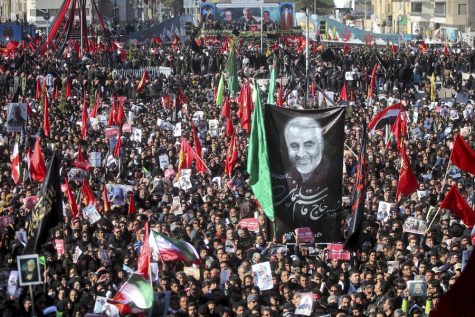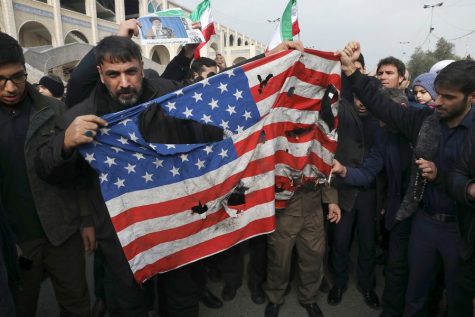Everything you need to know about the US conflict with Iran
January 10, 2020
The early days of 2020 have seen violence, tension, and the threat of war between the United States and Iran. While this issue is complex and complicated, the following is a breakdown of the basics of the conflict.
What Happened?
On January 3, 2020, President Trump announced to reporters that he authorized an airstrike in Iran that killed Qasem Soleimani, one of Iran’s top military generals, along with another official. The U.S. government has clarified that this was a response to avoid future attacks on Americans that remained at Iraqi military bases. In addition, Secretary of State Mike Pompeo stated that Soleimani was “actively plotting” plans which “would have put dozens if not hundreds of American lives at risk. We know it was imminent.”
This strike took place without approval from Congress. However, this action is considered legal since it was “conducted with the urgency of heading off an imminent threat.” Trump has commented that another reason behind this decision is due to the death of an American contractor at an Iraqi base. He claims that the death was caused by the Iranian militia, or possibly the violent protests at the US Embassy.

“General Qasem Soleimani has killed or badly wounded thousands of Americans over an extended period of time,” Trump said, adding that Soleimani “was plotting to kill many more…but got caught!”
Following the killing of Soleimani, the US is deploying thousands of troops to the Middle East. According to CNN, confirmed by the Pentagon, “The additional troops are from the Immediate Response Force of the 82nd Airborne Division in Fort Bragg, North Carolina.” This is a response in case matters escalate, which everyone in office was convinced and cautious of Iran’s moves.
“We did not take action to start a war,” says President Trump. On the other hand, Iran seems to differ.
Iran’s Response
Iran vowed retaliation following the attack. On January 5, 2020, Iran announced that they would no longer abide by the nuclear restrictions that were set forth in the Joint Comprehensive Plan of Action (JCPA). During this same day, Iran’s Supreme Leader added that their response to the attack would be “against military sites.” This was seen as a threat, and the U.S. took immediate precautions.
On January 7, 2020, Iran fired over a dozen missiles at two Iraqi military bases, following what they publicly announced about attacking military sites. This attack was in retaliation to the death of General Qasem Soleimani. No Americans or Iraqis were killed or injured in this attack.

The large Ain al-Assad base has about 1,500 personnel, including some 300 Americans, according to a Pentagon representative. Due to the public warning distributed from Iran, the U.S. had prepared for any attacks.
Iran’s Foreign Minister, Javad Zarif, clarified that this action was an act of defense. According to a Twitter post, Zarif states, “We do not seek escalation or war, but will defend ourselves against any aggression.”
What’s Next?
Following the attack, President Trump announced that US forces are “prepared for anything,” as they have taken precaution for what happens next. There’s no knowledge of what will happen after this, only assumptions. In addition, Trump also said, “Iran appears to be standing down, which is a good thing for all parties concerned and a very good thing for the world.”
According to recent reports, President Trump doubles down his own threats against Iran in response to the attacks not leading to casualties. This can be a good sign of avoiding war and any more violence. However, this is unpredictable. The road to peace is far from smooth, but for now, tensions are holding steady and calmer heads appear to be prevailing.










